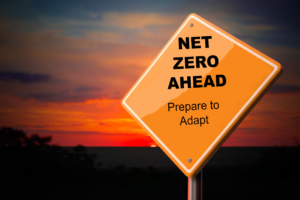I have posted comments before about corporate responsibility and attempts some companies have made to be socially responsible (“Corporate Conscience“). Adding to the discussion, Washington Post columnist Sebastian Mallaby wrote an interesting article about how “brands,” not just corporations, can affect the global landscape [“A New Brand of Power,” 7 August 2006]. He writes:
Motorola used to be a manufacturer of cellphones. Then it came up with its ultra-slim Razr handset and became a lifestyle company as well. Apple made the same transition years ago: It is not so much a computer maker as a style iCon. At certain select nightclubs, Coca-Cola is selling its black sugar in funky bottles etched with glow-in-the-dark graphics. This redesign helped to propel Coca-Cola onto a recent BusinessWeek cover. So what, you might say: The cool quotient in products may boost profits and amuse consumers, but what’s its significance for the nation’s future? Quite a lot, actually. The rising power of brands has implications for public health, globalization and the environment. It may even be changing the political equation.
That sounds like hyberbole. Mallaby notes, however, that among corporate assets intellectual property, data bases, patents, and brands are as important in today’s climate as physical assets like factories and equipment. He goes on to note that big brands seem to be crowding out smaller brands. Unilever, for example, sells products using 75 percent fewer brand names than it did a decade ago. That trend may indeed have far reaching, even chilling, effects on globalization IF it is a universal phenomenon. However, in another article I wrote about [“Wal-Mart, Culture, and Resiliency“], the authors noted that Wal-Mart is beginning to realize that maintaining local brands may be more important to the bottom line than establishing the Wal-Mart name in foreign markets.
Mallaby also argues that traditional advertising can be overpowered today by word-of-mouth or Web rants. He points to the famous example of the guy who taped his conversation with AOL when he was trying to stop his service. Mallaby uses that example to bolster his argument that going to fewer brands makes corporations more vulnerable (i.e., AOL is a single brand which means failure of that brand name could spell disaster for the company). His point about vulnerability may be true, but the AOL example doesn’t present a very convincing case. Anyone who has tried to stop AOL service in the past has their own tale of how difficult that can be. AOL set is itself up and was a victim of its own reputation not one man’s effort to bring it down. Mallaby argues:
If brands are both valuable and vulnerable, political consequences follow. Mighty companies have so much riding on their corporate image that they quiver in the face of customer opinion. And if they are mass-market companies, customer opinion is the same as public opinion, so corporate bosses become as sensitive to political and social shifts as elected officials.
Mallaby discusses how many fast food restaurants started offering healthier alternatives and even stopped using transfats to prepare french fries. He notes that some cereal manufacturers have started using whole grains to make many of their products healthier. On the other hand, people point to the rise of the “retro-sexual male” and many companies have started pandering to them (health concerns be damned). For example, Denny’s advertises its big breakfasts and Burger King advertises its huge multi-stacked hamburgers. General Motors is flaunting the Hummer’s “macho” image (despite rising gasoline prices) encouraging people to “drive” against the tide of public opinion. Mallaby gets much more interesting and convincing when he starts talking about globalization.
Consider public opinion about globalization. No regulation compels Nike to pay more than the prevailing wage in the poor countries it works in. But the value of Nike’s brand dwarfs its costs of manufacturing, so it wisely chooses to do so. No regulation, or at least none that is enforced effectively, prevents furniture companies from despoiling Third World forests. But U.S. stores with brands worth protecting insist on certification from the Forest Stewardship Council. The fight about including labor and environmental standards in trade agreements rages inconclusively in Congress. But corporations do not suffer from that sort of gridlock, so they’re ahead of the curve.
That kind of corporate response is important to ensure sustained development in emerging economies. Unfortunately, it does little to help failed or failing states because they don’t attract the Nikes of this world. The reason I keep pushing Development-in-a-Box is because it is targeted at failed states with the aim of helping lift them to the standards necessary to attract companies like Nike. Then things really start getting better. The same is true with the environment. Mallaby writes:
Consider the environmental behavior of U.S. companies at home. This used to be the classic case of politics leading business: For most of the past generation, regulators have forced environmental rules on grumbling corporations. But in the current debate on climate change, this order has reversed itself. Impatient companies are capping their own carbon emissions: Wal-Mart has promised to double the efficiency of its vehicle fleet and achieve a 30 percent cut in its stores’ energy usage. Its motive is not complicated. Internet-enabled critics have assaulted Wal-Mart, and the firm’s polling has suggested that 8 percent of shoppers have quit visiting its outlets because of its stance on social issues. An environmental makeover was essential to the brand.
While some double standards still exist (that is, some companies still behave better in the developed than in the developing world), the Web has made the world a small place and brutish behavior cannot be hidden for long. Mallaby sees this as a good thing (as do I) and concludes on this optimistic note:
The next stage may be for companies not merely to outpace government but to pull government along. Howard Schultz, the chairman of Starbucks, broke the mold by offering comprehensive health benefits to part-time workers, but now he’s even more ambitious: He’s lobbying Congress to fix the health system. Meanwhile, companies such as BP and GE have enhanced their brands with enviro-friendly policies, and perhaps may now nudge governments to become greener as well. But whether or not we get to that, something big is going on. At a time when Washington seems incapable of tackling serious policy challenges, brands are creating a sort of shadow government. They cannot replace the real one, not by a long shot. But they are better than nothing.
I agree with Mallaby that this is better than nothing, but I would still like the head of some nation to step forward with both the vision and will to unite the developed world and start shrinking the gap in a systematic and sustained way. For more thoughts on that, you can read my post “The Need for Global Leadership.”




